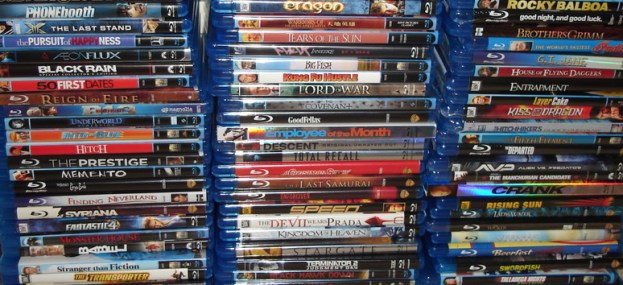 The first UltraViolet-enabled devices and titles are cleared for release this fall. The Digital Entertainment Content Ecosystem alliance has begun the licensing process making UltraViolet available to the consumer as early as October. If a consumer purchases a new Blu-ray or DVD movie, UltraViolet allows the consumer to create an account to own the digital rights of the content. With a digital locker of content in the cloud, consumers can authorize up to twelve devices to access the content via streaming. Consumers can authorize the digital rights to six other members of the household as well. Consumers also have the option of downloading the movie if the physical media is lost. There’s no charge for the service beyond the original cost of the disc.
The first UltraViolet-enabled devices and titles are cleared for release this fall. The Digital Entertainment Content Ecosystem alliance has begun the licensing process making UltraViolet available to the consumer as early as October. If a consumer purchases a new Blu-ray or DVD movie, UltraViolet allows the consumer to create an account to own the digital rights of the content. With a digital locker of content in the cloud, consumers can authorize up to twelve devices to access the content via streaming. Consumers can authorize the digital rights to six other members of the household as well. Consumers also have the option of downloading the movie if the physical media is lost. There’s no charge for the service beyond the original cost of the disc.

Detractors of Ultraviolet view the technology as advanced DRM since access to cloud content requires an Internet connection at all times. There’s also the possibility that reselling a used disc on a third party service like eBay is impossible if the disc is already registered to another account. There are privacy concerns over the content of digital lockers as well. With a vast wealth of information about consumer purchases, studios can more accurately tailor advertisements to consumers though direct channels or product placement.
Hardware and software that supports Ultraviolet will have a new “UV” logo on the packaging (as seen above). Initial partners of the Ultraviolet tech include LG, Panasonic, Samsung, Sony and Toshiba as well as Cisco, Dell, Hewlett-Packard, Motorola, and Nokia. Consumers can expect product announcements of Ultraviolet-compatible hardware at CEDIA in early September, if not sooner. It’s unclear if current hardware can be upgraded with new firmware to access Ultraviolet. Warner Bros., Paramount, Fox, Universal, Sony Pictures and Lionsgate are in the process of rolling out support on the software side and likely have a new reason to re-release discs beyond special editions or extended versions.


